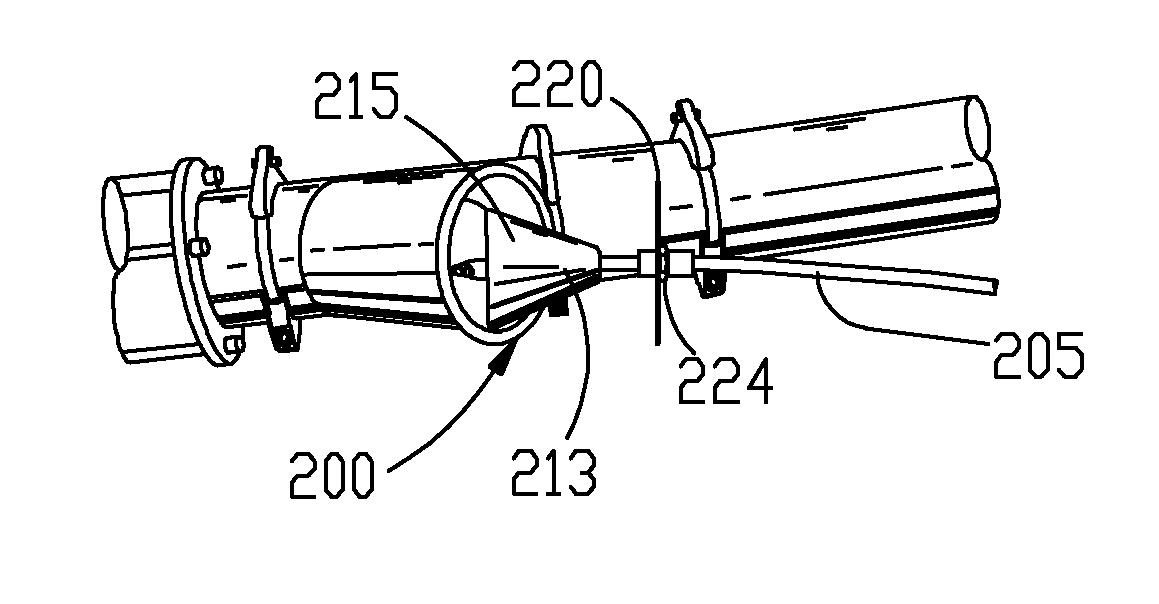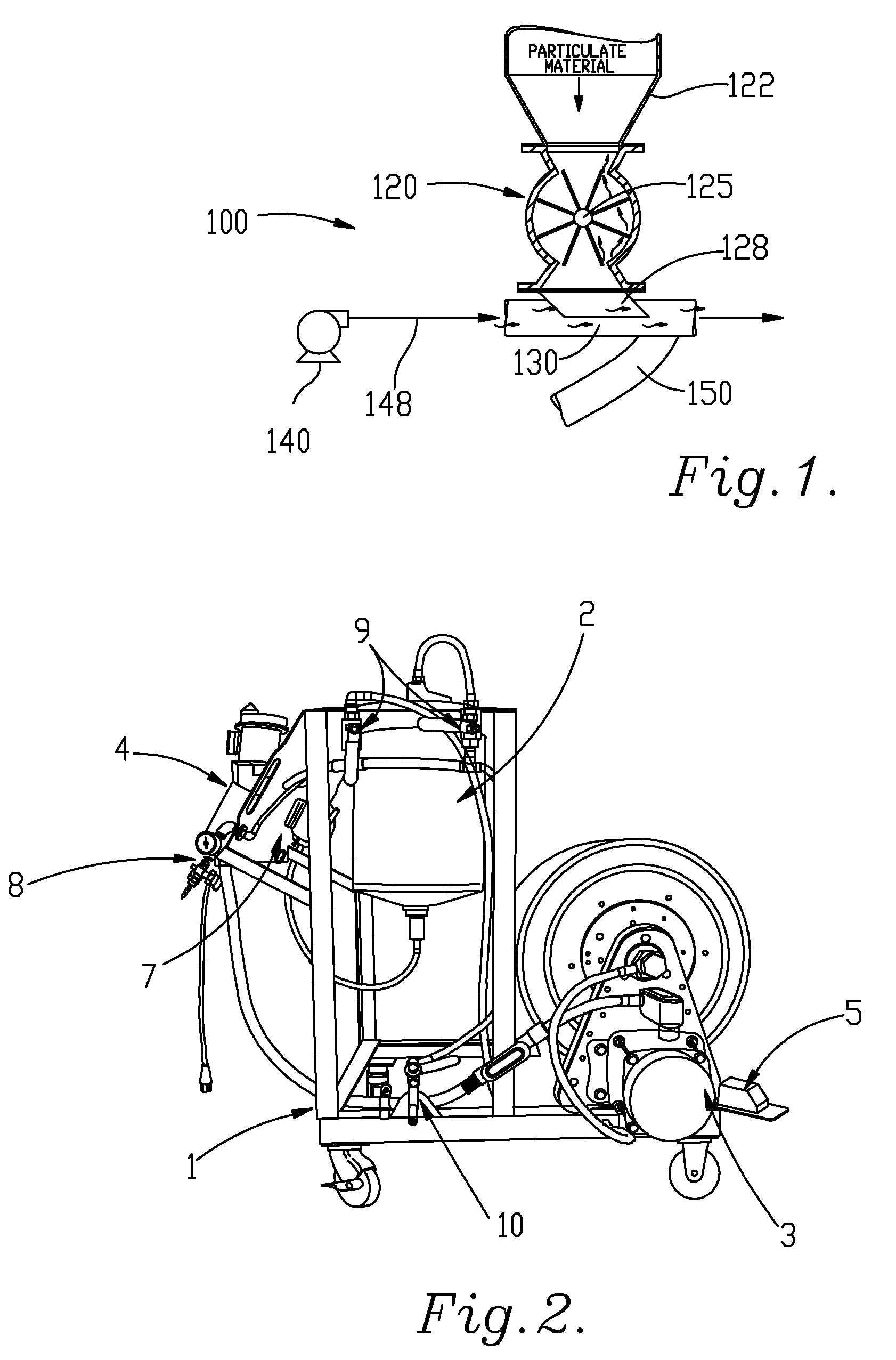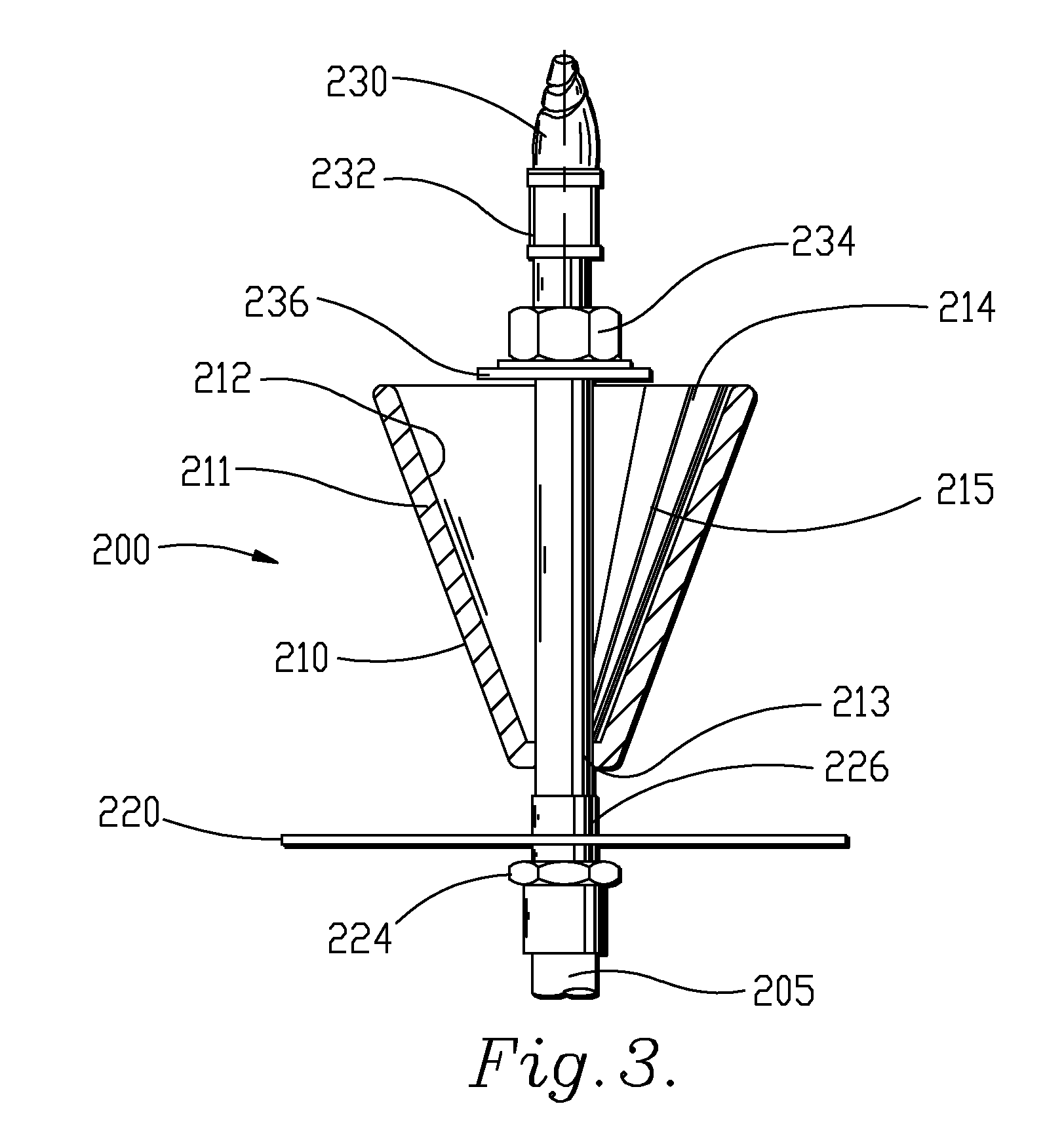System and method for sanitizing pneumatic conveying piping
a pneumatic conveying and sanitizing technology, applied in the direction of cleaning, cleaning process and apparatus, chemistry apparatus and process, etc., can solve the problems of high particle-to-particle and particle-to-pipe interaction, cip system requires a very high volume of cleaning fluid, and sanitize the interior of the pipe. , to achieve the effect of low volume of sanitizing solution, easy retrofitting into existing systems, and convenient us
- Summary
- Abstract
- Description
- Claims
- Application Information
AI Technical Summary
Benefits of technology
Problems solved by technology
Method used
Image
Examples
Embodiment Construction
[0029]As required, a detailed embodiment of the present invention is disclosed herein; however, it is to be understood that the disclosed embodiment is merely exemplary of the principles of the invention, which may be embodied in various forms. Therefore, specific structural and functional details disclosed herein are not to be interpreted as limiting, but merely as a basis for the claims and as a representative basis for teaching one skilled in the art to variously employ the present invention in virtually any appropriately detailed structure.
[0030]The inventive concept relates to a system and method for sanitizing pneumatic conveying lines. It will be appreciated that although the embodiments of the system of the inventive concept described herein are particularly useful for sanitizing conveying lines in dilute phase conveying systems, some embodiments will likewise be utilized for sanitizing conveying lines of dense phase conveying systems, or of any other type of conveying syste...
PUM
 Login to View More
Login to View More Abstract
Description
Claims
Application Information
 Login to View More
Login to View More - R&D
- Intellectual Property
- Life Sciences
- Materials
- Tech Scout
- Unparalleled Data Quality
- Higher Quality Content
- 60% Fewer Hallucinations
Browse by: Latest US Patents, China's latest patents, Technical Efficacy Thesaurus, Application Domain, Technology Topic, Popular Technical Reports.
© 2025 PatSnap. All rights reserved.Legal|Privacy policy|Modern Slavery Act Transparency Statement|Sitemap|About US| Contact US: help@patsnap.com



